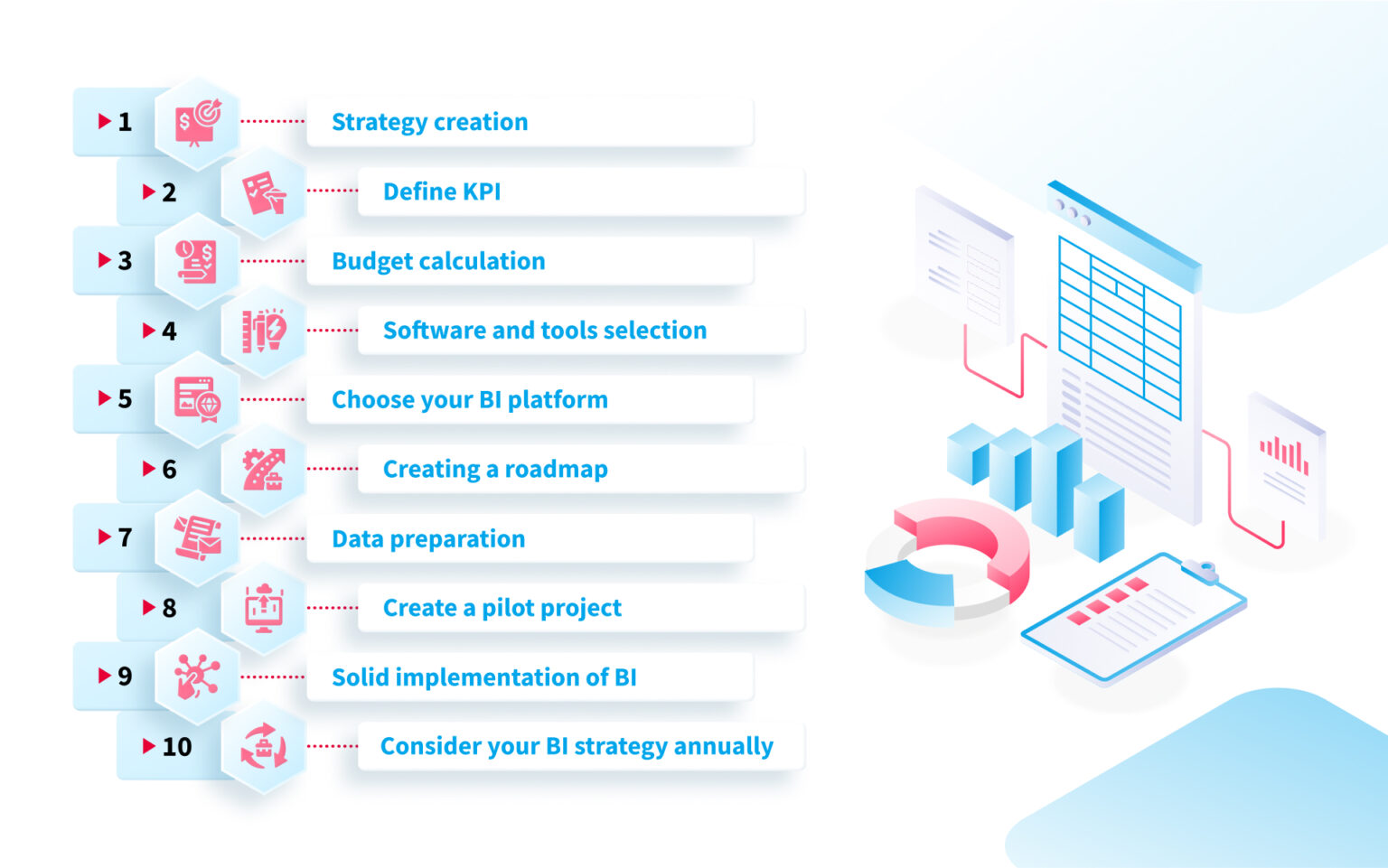
Business Intelligence Software: A Step-by-Step Guide to Better Decisions
In today’s fast-paced business environment, making informed decisions is crucial for success. With the vast amount of data available, it can be overwhelming to analyze and interpret it without the right tools. This is where Business Intelligence (BI) software comes in – a powerful solution that helps organizations make data-driven decisions. In this article, we will explore the world of Business Intelligence software and provide a step-by-step guide on how to leverage it to make better decisions.
What is Business Intelligence Software?
Business Intelligence software is a set of tools that enable organizations to collect, analyze, and visualize data from various sources. It helps to transform raw data into meaningful insights, which can be used to inform business decisions. BI software typically includes features such as data mining, reporting, and analytics, as well as data visualization tools like charts, graphs, and dashboards.
Benefits of Business Intelligence Software
The benefits of using Business Intelligence software are numerous. Some of the most significant advantages include:
- Improved decision-making: By providing access to real-time data and analytics, BI software enables organizations to make informed decisions quickly.
- Increased efficiency: Automating data analysis and reporting tasks saves time and reduces the risk of human error.
- Enhanced visibility: BI software provides a unified view of organization-wide data, enabling managers to monitor performance and identify areas for improvement.
- Competitive advantage: By analyzing market trends and customer behavior, organizations can stay ahead of the competition and identify new business opportunities.
Step-by-Step Guide to Implementing Business Intelligence Software
Implementing Business Intelligence software requires careful planning and execution. Here’s a step-by-step guide to help you get started:
Step 1: Define Your Goals and Objectives
Before selecting a BI software, it’s essential to define your organization’s goals and objectives. Identify the specific business problems you want to solve and the types of decisions you want to support. This will help you determine the required features and functionality of the BI software.
Step 2: Assess Your Data
Evaluate the types of data you have available, including its quality, quantity, and sources. Consider the various data formats, such as structured and unstructured data, and determine how you will integrate them into your BI system.
Step 3: Choose the Right BI Software
With numerous BI software options available, it’s crucial to select the one that best fits your organization’s needs. Consider factors such as:
- Features and functionality: Ensure the software meets your specific requirements.
- Scalability: Choose a software that can grow with your organization.
- User interface: Select a software with an intuitive and user-friendly interface.
- Integration: Consider software that can integrate with your existing systems and data sources.
- Cost: Evaluate the total cost of ownership, including licensing, implementation, and maintenance costs.
Step 4: Design and Implement Your BI System
Once you’ve selected your BI software, design and implement your BI system. This includes:
- Data warehouse design: Create a centralized repository to store and manage your data.
- Data integration: Integrate data from various sources into your BI system.
- Data visualization: Develop dashboards and reports to visualize your data.
- Security and access control: Ensure that sensitive data is protected and access is restricted to authorized users.
Step 5: Train and Support Users
Provide comprehensive training and support to users to ensure they can effectively use the BI software. This includes:
- User training: Offer training sessions to help users understand the software’s features and functionality.
- Documentation: Provide detailed documentation and user guides.
- Ongoing support: Offer ongoing support and maintenance to ensure the BI system continues to meet your organization’s evolving needs.
Step 6: Monitor and Evaluate
Regularly monitor and evaluate your BI system to ensure it’s meeting its intended goals and objectives. This includes:
- Performance metrics: Track key performance indicators (KPIs) to measure the system’s effectiveness.
- User adoption: Monitor user adoption and feedback to identify areas for improvement.
- System updates: Regularly update the system to ensure it remains secure and efficient.
Best Practices for Using Business Intelligence Software
To get the most out of your Business Intelligence software, follow these best practices:
- Start small: Begin with a pilot project to test the software and refine your approach.
- Focus on business outcomes: Align your BI initiatives with specific business outcomes and goals.
- Involve stakeholders: Engage stakeholders throughout the implementation process to ensure their needs are met.
- Continuously monitor and evaluate: Regularly assess the effectiveness of your BI system and make adjustments as needed.
- Stay up-to-date with industry trends: Stay informed about the latest trends and advancements in BI software and technologies.
Common Business Intelligence Software Tools
Some popular Business Intelligence software tools include:
- Tableau: A data visualization and analytics platform.
- Power BI: A business analytics service by Microsoft.
- QlikView: A business intelligence and data visualization platform.
- SAP BusinessObjects: A business intelligence platform that provides reporting, analysis, and dashboards.
- Oracle Business Intelligence: A comprehensive business intelligence platform that includes reporting, analysis, and data visualization.
Conclusion
Business Intelligence software is a powerful tool that can help organizations make informed decisions and drive business success. By following the step-by-step guide outlined in this article, you can effectively implement a BI system that meets your organization’s specific needs. Remember to stay focused on your goals and objectives, continuously monitor and evaluate your system, and stay up-to-date with the latest trends and advancements in BI software and technologies. With the right BI software and a well-planned implementation strategy, you can unlock the full potential of your data and drive business success.
Closure
Thus, we hope this article has provided valuable insights into Business Intelligence Software: A Step-by-Step Guide to Better Decisions. We appreciate your attention to our article. See you in our next article!


